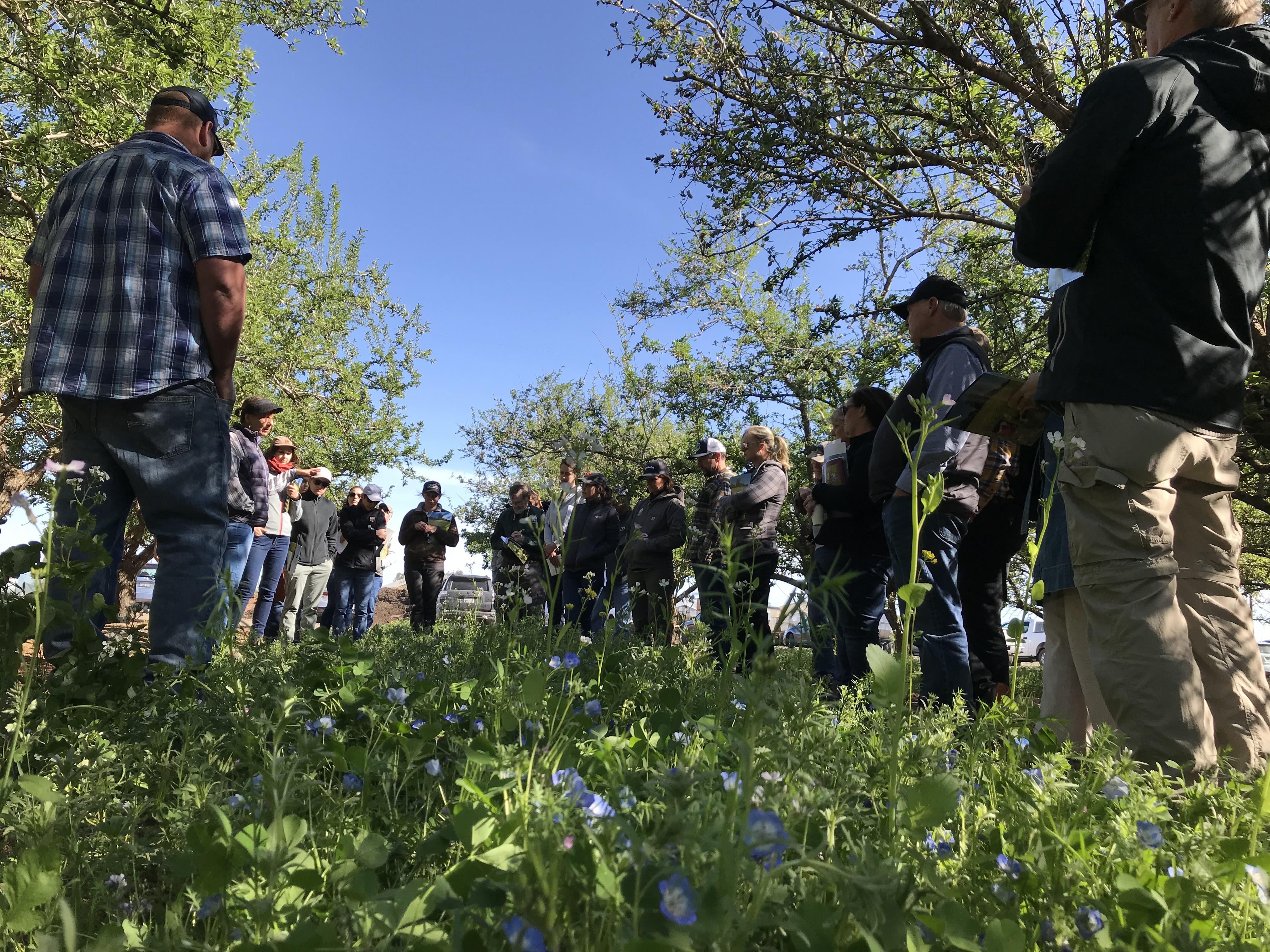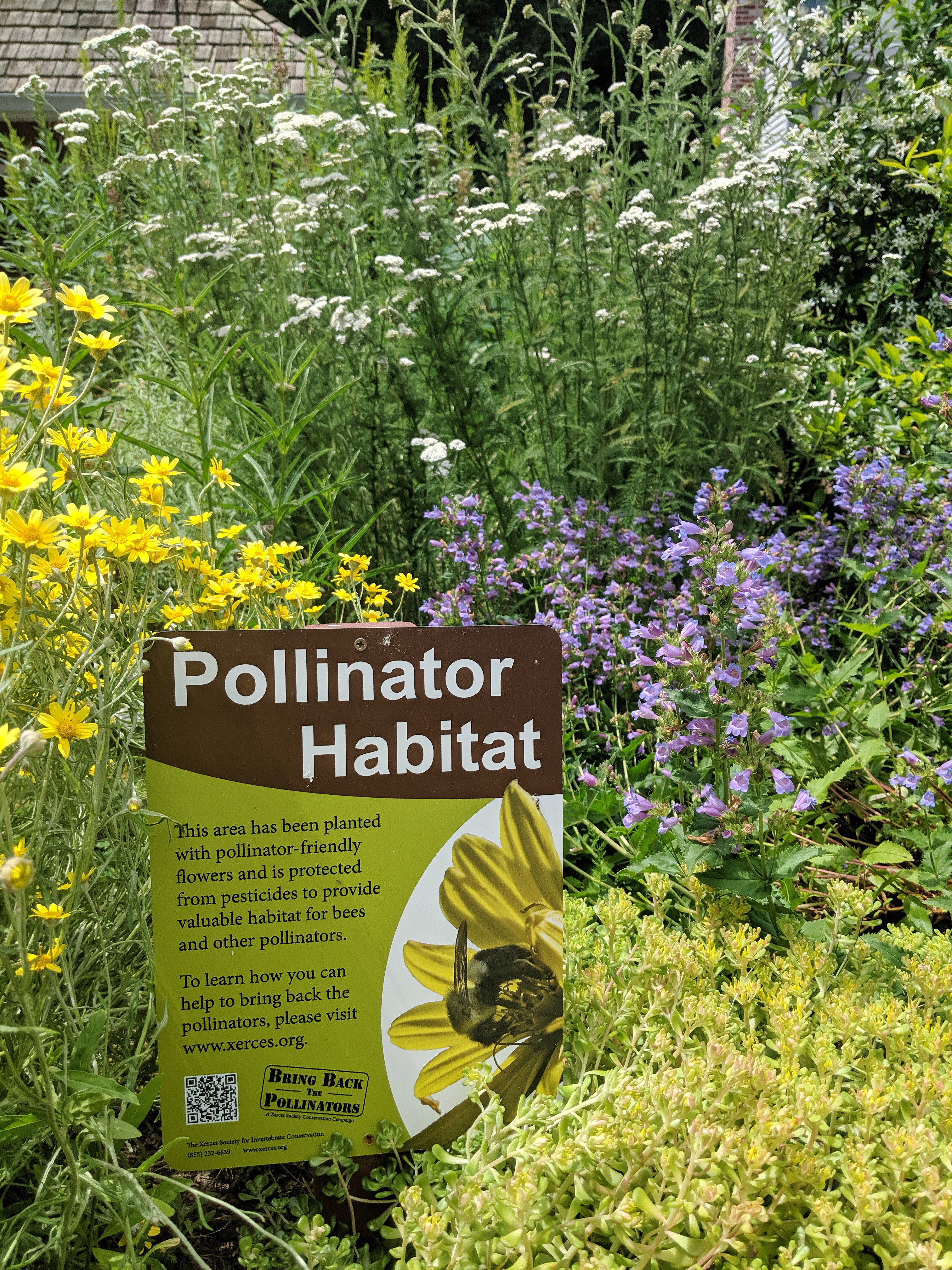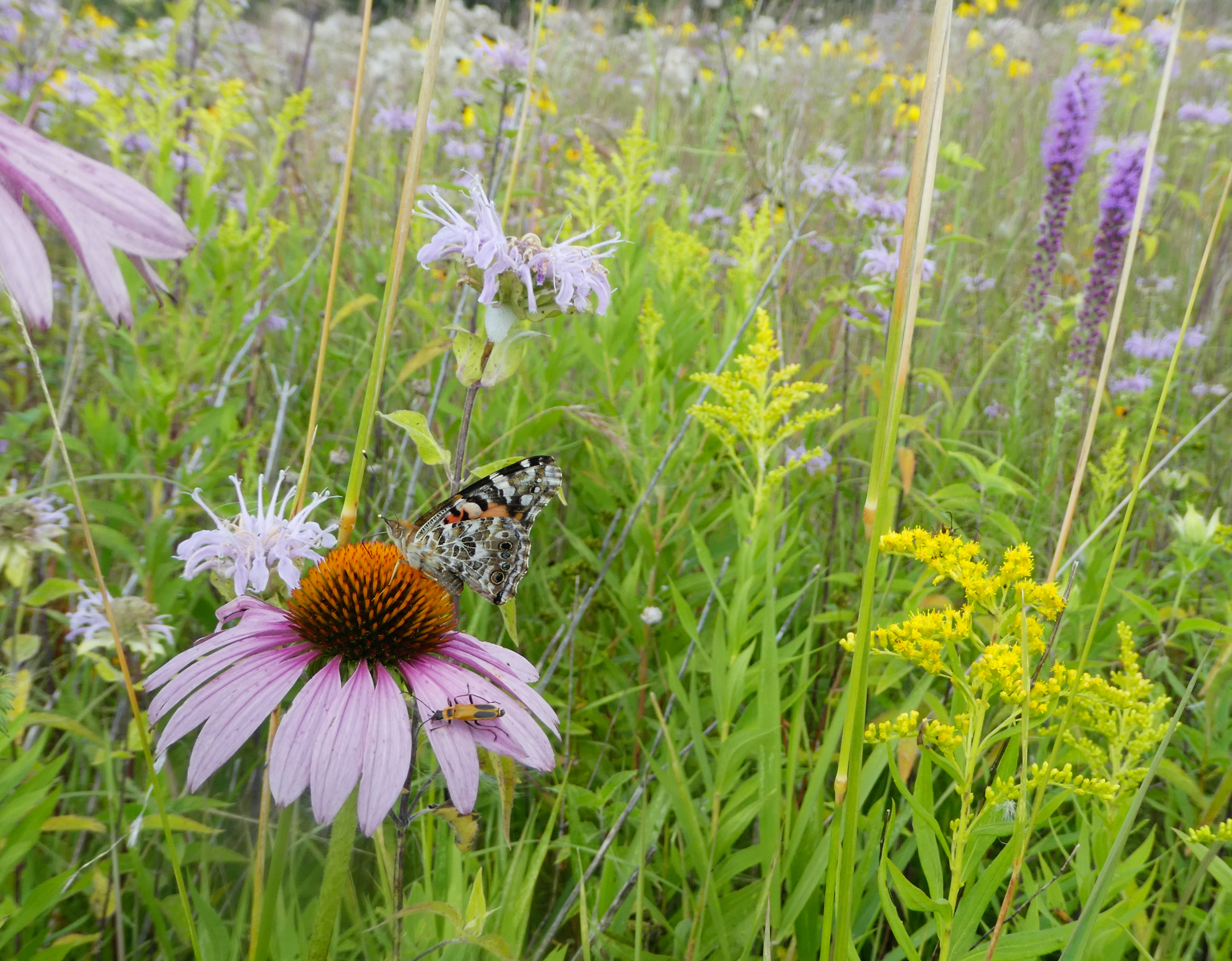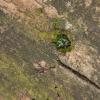Pollinator Week may be ending, but you can still join us in supporting efforts to conserve these vital invertebrates. Here's how.
As we wrap up another Pollinator Week, with all its celebration and spotlight on bees, flies, butterflies, moths, and other pollinators, it’s worth pausing to consider what else we can do to help these essential animals. After all, they don’t go away now that it’s not Pollinator Week, so we shouldn’t stop working to protect them!
Without a doubt, every week is Pollinator Week here at the Xerces Society. Our staff are consistently working with farmers, public land managers, suburban park managers, and gardeners, providing guidance on planning and creating habitat. We are presenting workshops, giving talks, and hosting other events in dozens of states. Our scientists are conducting surveys and developing management plans. We collaborate with local communities to help them introduce pesticide bans and support the efforts of the Bee City USA and Bee Campus USA affiliates. Daily, our social media specialists are tweeting and posting information and news that reaches tens of thousands of people across the world.

You, too, can make every week Pollinator Week. If you have a garden, follow the four principles of the Pollinator Protection Pledge: grow flowers, provide places for bees to nest and butterflies to lay eggs, avoid pesticides, and share the word. Even if you don’t have a garden—or want to take pollinator conservation beyond the garden gate—you can weave these principles into other parts of your daily life. Want to avoid pesticides? Purchase organic produce (this is not completely pesticide-free, but certainly better), or work with your city council to reduce pesticide use in parks or to reduce mosquito spraying. No place to grow pollinator plants? You could encourage others to plant flowers. Does your neighborhood association maintain landscaping? How about your local school or church? Wherever there are flowers, there should also be nest sites (bare ground) and the right plants for butterfly caterpillars to eat, so that all life stages are supported.
As for sharing the word: In many ways, this is the easiest to do. Facebook, Instagram, Twitter, and other social media platforms make sharing photos and information simple. You can put up signage on your property to indicate your commitment to supporting pollinators; there are some great hand-made signs out there, or there is also the Xerces Society pollinator habitat sign, which is available as a gift to donors. You could also write a letter to your local newspaper.

Wherever you live or work, there are things you can do all year to support pollinators. Are you a farmer? Consider whether Bee Better Certified is a good fit. Do you work at a college? Maybe you can convince the institution to become a Bee Campus USA affiliate. You can also participate in a community science project such as Bumble Bee Watch or one of the newer regional bumble bee atlases—Pacific Northwest and Nebraska. There are also numerous other efforts to survey monarchs, plants, and more!
If you prefer a more sedentary activity—or just need a rest after chasing bees!—there are some really good books that will guide you as you learn more. Maybe reading them could be a winter activity. They should all be available from your local booksellers, online, or from your library. These first three are all written by Xerces Society staff and focus on providing practical advice:
- Attracting Native Pollinators, by Eric Mader, Matthew Shepherd, Mace Vaughan, and Scott Black, in collaboration with Gretchen LeBuhn (Storey Publishing, 2011).
- 100 Plants to Feed the Bees, by Eric Lee- Mäder, Jarrod Fowler, Jillian Vento-Feldman, and Jennifer Hopwood (Storey Publishing, 2016).
- Gardening for Butterflies, by Eric Lee-Mäder, Jennifer Hopwood, Mace Vaughan, Scott Hoffman Black, and Lora Morandin (Timber Press, 2016).
You might also want to explore the background to these issues. Here are a few books that I have particularly enjoyed reading and which have helped me understand bees and other pollinators and have shaped my approach to gardening and life in general:
- Bringing Nature Home, by Doug Tallamy (Timber Press, 2009).
- The Living Landscape, by Rick Darke and Doug Tallamy (Timber Press, 2014).
- Silent Spring, by Rachel Carson (Houghton Mifflin, 1962).
- The Forgotten Pollinators, by Steve Buchmann & Gary Nabhan (Island Press, 1997).
- Buzz: The Nature and Necessity of Bees, by Thor Hanson (Basic Books, 2018).
- The Bees in Your Backyard, by Joseph Wilson and Olivia Messinger Carril (Princeton Press, 2015).
- A Sand County Almanac, by Aldo Leopold (Oxford University Press, 1968 [1949]).
There are many more that are worth reading, but I didn’t want this to become a lengthy list. These are just some that resonated with me.

Thank you for anything and everything that you do to help bees and other pollinators. It might feel like the changes you make individually are insignificant, but if we each keep taking steps to help pollinators, the landscapes around us will change. They will become better for bees—and our neighborhoods, farms, and parks will fill with life.
Further Reading
Pollinator Week may be over, but we still have lots of great information on our Pollinator Week page that can be used year-round!
Check out the Pollinator Conservation Resource Center for region-specific plant lists, native seed vendors, tips, and more!
Learn more about the Bring Back the Pollinators campaign.
Learn more about the Xerces Society’s Pollinator Conservation Program.




